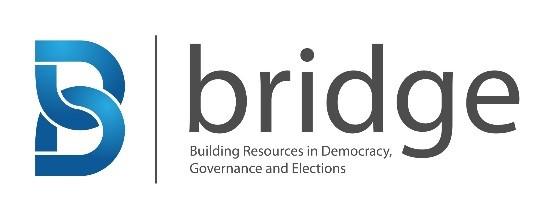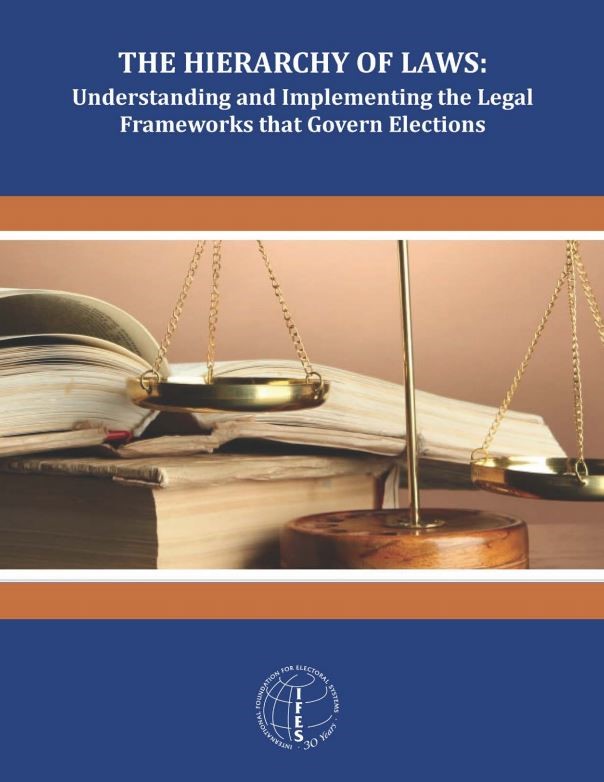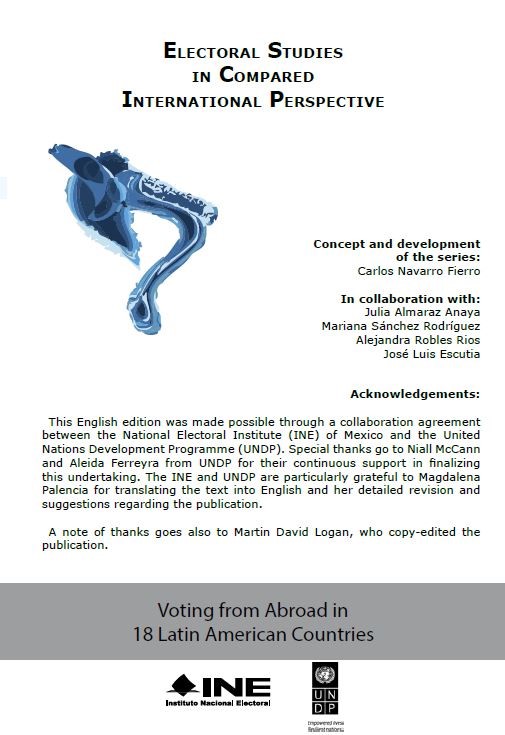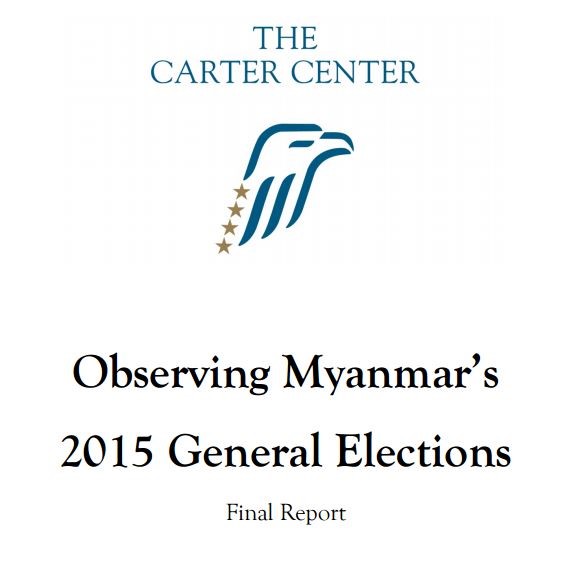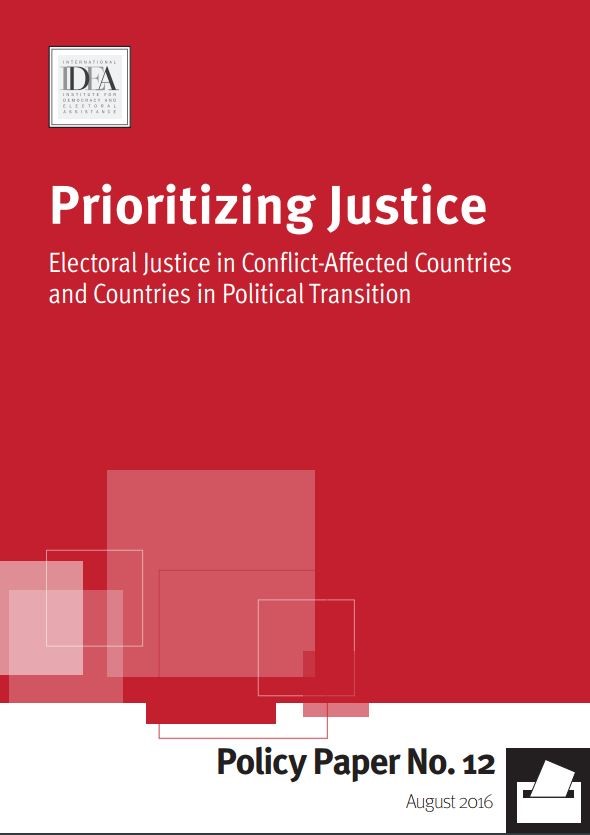Newsletter November 2016

|

Dear reader, This edition of the ACE Newsletter features an interview with Professor Attahiru Jega, the former Chairman of the Independent Electoral Commission of Nigeria (INEC). INEC was tasked with delivering credible elections in a challenging electoral environment, and Professor Jega provides insight into the commission’s use of biometric voter registration in 2015. With elections in the United States fast approaching, we also wanted to share a resource from one of our ACE partners. The Carter Center collaborated with the National Conference of State Legislatures to compile rules and regulations for observing elections in the United States across all 50 states. Be sure to check it out here! The November 2016 edition of the ACE Newsletter further highlights:
The ACE Electoral Knowledge Network promotes credible and transparent electoral processes with an emphasis on sustainability, professionalism, and trust in the electoral process. ACE offers a wide range of services related to electoral knowledge, assistance, and capacity development. Thank you for reading November’s newsletter and for your involvement with ACE. We look forward to your contributions to the Network! Best regards, The ACE Electoral Knowledge Network This newsletter is also available in PDF format.
Feature: Using Biometric Voter Registration for the 2015 Elections in Nigeria – An Interview with Professor Attahiru JegaProfessor Jega was the Chairman of the Independent Electoral Commission of Nigeria from 2010 to 2015. This interview was conducted on May 23, 2016.
1. What was the context of the 2015 elections in Nigeria? The period leading to the March 2015 national elections in Nigeria was marked by very high expectations. Specifically, there was the expectation that the Independent National Election Commission (INEC) would improve on previous elections in Nigeria. People wanted a more efficient and effective INEC capable of enhancing the integrity of Nigerian elections. Given some of the experiences in previous elections in Nigeria, people were anxious about INEC’s ability to address fraud, multiple voting, and to develop a more valid voter register. On its own part, INEC considered all these concerns and became determined to address them. It made a commitment to administer an election with much improved integrity and started preparations for the elections very early. We started preparing immediately after the April 2011 national elections and all preparations were geared toward fulfilling the commitment to conduct remarkably improved elections in Nigeria. This was the background to 2015 elections. 2. Why did you want to introduce biometric voter registration? The use of biometric voter registration (BVR) in the 2015 elections was not new to elections in Nigeria. INEC used BVR before the 2011 elections. The reason for introducing it at the time was that INEC realized that the quality of an election was closely related to the integrity or validity of the voter register. INEC was also convinced that using biometric technology not only for registration process, but also for maintaining a database of registered voters would help improve the overall quality of elections in Nigeria. At the time when BVR was done in January/February 2011, many people were concerned that it may not be possible to utilize the system for the 2011 elections due to the short time period. The elections were to be held in April of 2011. INEC was able to conduct the BVR within three weeks. This entailed equipping each of the 120,000 polling units in Nigeria with a data capture device. Between February and March of 2011, INEC was able to remove close to one million multiple registrants from the voter register. For the 2015 elections, we used Advance Fingerprint Identification System (AFIS) for de-duplication and removal of multiple registrants in the national database. INEC ensured that this technology was widely used to match fingerprints, and to eliminate multiple registrants. This helped us to improve on the national database, which INEC had established since 2011. Since the AFIS we used was about 95% accurate, we also made provisions for it to be complemented by a manual, physical verification system. Through this manual verification process, INEC detected and removed more multiple registrants from the register. At the time of the elections, INEC was confident that it had the cleanest register ever used in elections in Nigeria. Despite this, we were also conscious of the possibility of multiple voting and knew we needed to prevent it. This was why INEC issued every registered voter with the Permanent Voters Card (PVC), which contained his/her demographic and biometric information on a chip. We then used the Smart Card Readers (SCRs) during the 2015 elections to identify, verify and authenticate voters before they were allowed to vote. The combination of the PVC and the card reader helped to prevent multiple voting. 3. What factors did you consider when selecting a system? A significant consideration was whether the technological system chosen could address unique challenges associated with the Nigerian electoral system. After assessing the challenges that we had to address, INEC developed its own requirements and specifications for a technological system. The requirements demanded a system that is robust, could ensure efficiency and promote transparency in the electoral process. 4. What impact does trust in the independence of the EMB have on acceptance of the new technology? Trust is very important. Indeed, an electoral commission has a responsibility to be honest and earn the trust of citizens. In Nigeria, INEC held series of meetings with a broad range of stakeholders including political parties and civil society groups. These meetings availed us the opportunity to liaise with other stakeholders and this proved to be key in the efforts of INEC to build trust and confidence. This is very important. 5. How did you get buy-in from political parties, CSOs, etc.? When and how did the consultations take place? INEC started meeting stakeholders very early as part of its preparation for the 2015 elections. Between 2011 and 2015 when the elections took place, we had stakeholder meetings, especially with representatives of registered political parties, quarterly. That is, every three months. These meetings served as an avenue for INEC to share its ideas and plans for the forthcoming elections. It was during some of these meetings that INEC presented the new technologies it used for the elections to stakeholders and got their buy-in. We also demonstrated to them how the technology works. This included explanations about procedure and guidelines for use of the card readers on election-day. We also did public demonstrations and testing and sensitization and public enlightenment. As the elections drew closer, INEC-stakeholder meetings were more regular. We held meetings with political parties – the party chairs and secretaries – every month before the elections. This helped to build trust and to foster consensus on key issues relating to the elections. There were instances, however, when political parties appeared subsequently to kick against some decisions that were agreed on at these meetings. The card reader was a case in point. As the elections drew closer, one of the political parties kicked against using the card reader even though it had earlier given support to its use. But INEC, knowing that the party’s change of mind was purely political – and as the legally mandated body to make such decisions – proceeded with the use of the card reader technology for the elections. Since there were extensive consultations, many stakeholders, especially civil society groups who were involved in the process, understood the situation and knew exactly what INEC was doing. In most cases, it was these civil society groups that were advocating for INEC and defending the arrangements and plans for the elections. In addition, inclusiveness maximizes the inputs from others and this serves to reduce the chances for mistakes. The mutual trust that is fostered through an inclusive process also helps to ensure that even when mistakes occurred, people were more willing and able to show support and understanding. This interview has been condensed. The full version is available on ACE here. Practitioners' Network Updates
Consolidated replies are published summaries of the discussions on the Practitioners' Network. The following page highlights some of the consolidated replies published since May, including Online candidate nomination, Electoral participation of domestic migrants, Peer-to-Peer Capacity Building, Electoral reforms initiated by state stakeholders, and EMB entry points for advancing youth participation. Dozens of questions have been consolidated already, so be sure to look here for a full overview. Recent Consolidated Replies
Recent Publications by ACE Partners and Members of the Practitioners' Network
Building Resources in Democracy, Governance and Elections (BRIDGE) is a modular professional development program with a particular focus on electoral processes. BRIDGE represents a unique initiative where five leading organisations have jointly committed to developing, implementing and maintaining the most comprehensive curriculum and workshop package available. In early 2016, BRIDGE partners initiated a general update of the BRIDGE curriculum, starting with the Voter Registration, Electoral Systems and Strategic Planning modules. BRIDGE version 3 aims to meet changing needs in electoral environments, update BRIDGE language and activities to reflect inclusive and diverse societies; renew BRIDGE resources in terms of new developments in the field of elections. For more information please visit the BRIDGE website.
AGENDA: Disability Access and Inclusion in the Political Processes of Four Southeast The Hierarchy of Laws: Understanding and Implementing the Legal Frameworks that Govern Elections (IFES) This paper is intended as a guide for election practitioners who are interpreting, developing, and implementing legal and regulatory frameworks for elections, and who should understand the hierarchy of the laws governing elections. For each level of that hierarchy, this paper sets out the law’s purpose; the actor with drafting responsibility; the source of authority; the actor with enforcement responsibility; the amendment process; and why it has more authority than the form of law one step below it. Understanding these principles of hierarchy can help election management bodies fully execute their legal mandate to develop and enforce rules and procedures that give effect to electoral laws, and ultimately protect fundamental civil and political rights.
Voting from Abroad (UNDP and INE) Out-of-country voting (OCV) is considered a key element of political participation from abroad, yet regulations and legal framework vary drastically from country to country. The study provides a comparative overview of both the fundamental features of the regulations adopted by the 15 countries in Latin America, and of the systems that have been used to implement them. In the first part, the nature, span and implications of the concepts and discourse that underlie the subject are considered. The second part focuses on a more rigorous, comparative assessment of models and experiences across the region.
Observing Myanmar’s 2015 General Elections: Final Report (The Carter Center) The Center has had a presence in Myanmar since 2013 and began its long-term observation work in December 2014. Its formal electoral observation mission was launched in August 2014 following the setting of the election date. Three teams of long-term observers deployed across the country, and a core team of experts worked out of Yangon. They were joined in November 2015 by a contingent of more than 50 short-term of observers. The Center kept a small team in Myanmar into 2016 to monitor post-election activities.
Prioritizing Justice: Electoral Justice in Conflict-Affected Countries and Countries in Political Transition (International IDEA) This Policy Paper argues for the establishment of an electoral justice system at the outset of a political transition away from violent conflict or non-democratic rule, and before initial elections are held. It explains why doing so, despite the challenges, is so important, and offers recommendations on how to develop such systems, in an environment where an adequate legal framework and strong electoral justice institutions may not yet exist.
Electoral integrity: ensuring rhetoric reflects realities in African Electoral Assessments (EISA) This policy brief reviews current trends in election practices in Africa and the challenges that affect their integrity. It also proposes ways in which African intergovernmental organisations can better assess and promote the integrity of elections in their member states by enhancing their framework, methodology and relations with different stakeholders. |

|

